Edogawa Craft Stories

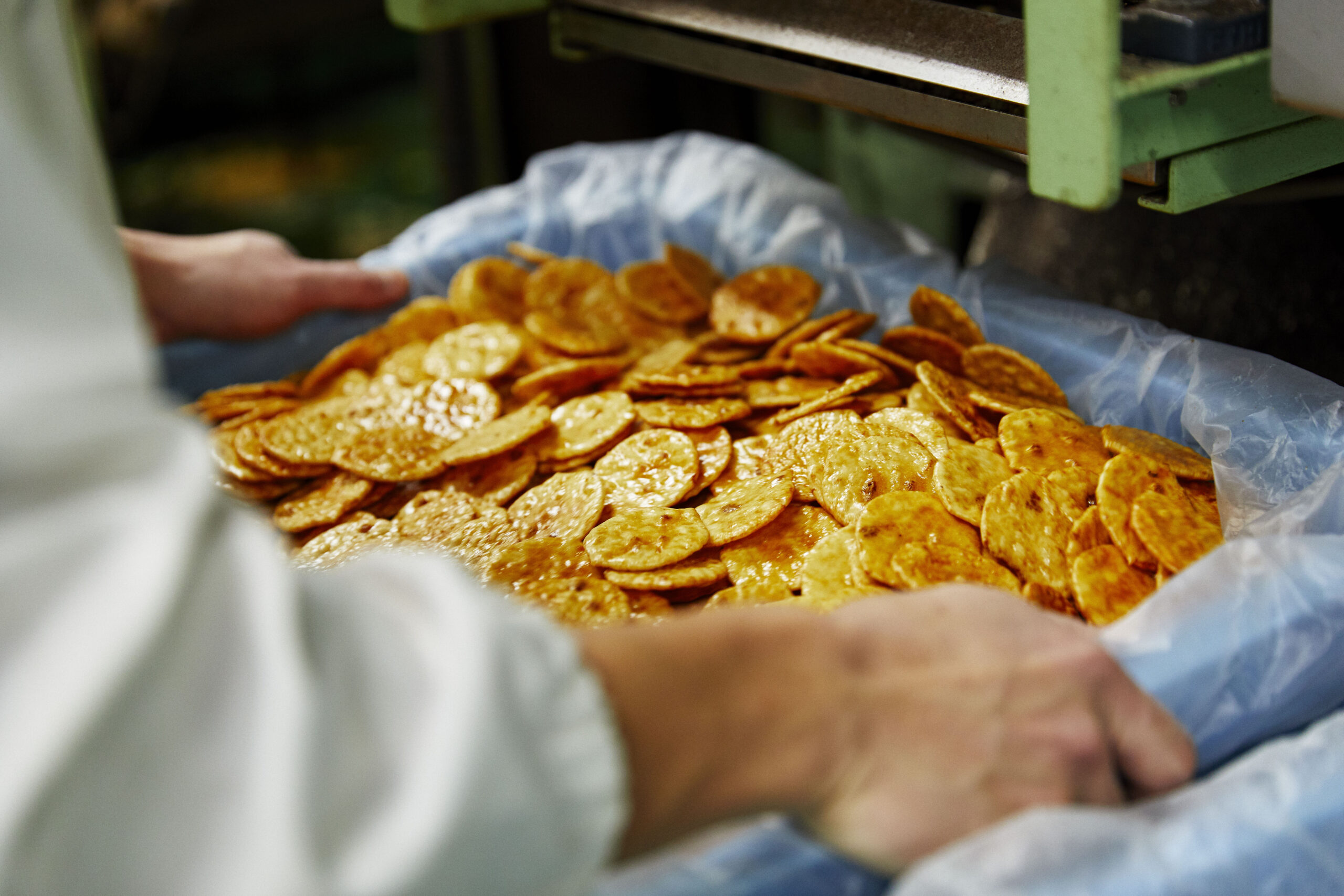
Senbei: The Fourth-Generation Brothers Updating a Nostalgic Flavor for Today
Senbei
Kasahara Seika
Kasahara Katsunori
Kasahara Tadakiyo
Turn down a narrow alley in Funabori and you’ll find a small town factory that has been baking senbei (rice crackers) for over 60 years. A beloved Japanese snack cherished across generations, senbei continues to evolve in the hands of fourth-generation brothers Kasahara Katsunori and Tadakiyo of Kasahara Seika. As the duo behind the popular senbei brand Senbei Brothers, their journey offers valuable clues for the future of traditional industries.
Kasahara Seika was founded in 1945 as Kasahara Senbeiya in Tokyo’s Shinjuku City. In 1970, following the Tokyo Olympics and related city planning projects, the company relocated via Katsushika to its current home in Edogawa City. Since then, this small factory in Funabori has spent over half a century baking senbei, primarily as a manufacturer for wholesale. Today, that tradition is upheld by fourth-generation president Kasahara Katsunori and his younger brother Tadakiyo, the factory’s production manager.
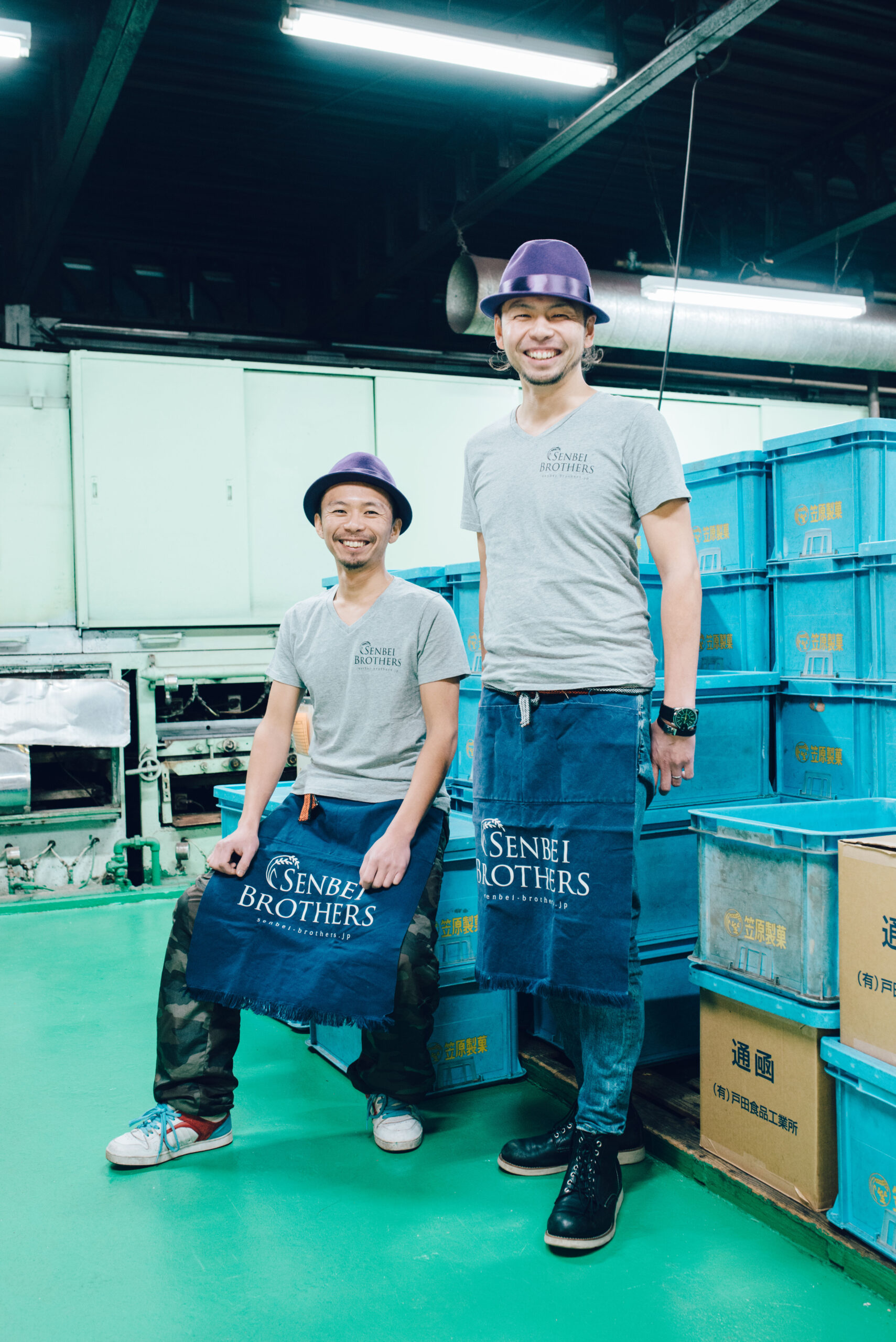
We spoke with fourth-generation president Kasahara Katsunori (right) of Kasahara Seika. His younger brother, Kasahara Tadakiyo (left), manages production and quality control.
55 Years in Funabori, Preserving the Family Flavor
The factory still uses machinery dating back to the company’s founding—an enduring symbol of their family-run operation. One standout example is the unique production line devised by their grandfather, the company’s founder. In an era when hand-grilled senbei was still the norm, the first-generation Kasahara was an early adopter of automation. He designed a two-story setup in which a dryer sits directly above the senbei oven, repurposing the rising heat from the baking process to dry the finished senbei efficiently.
“He wanted to make the most of Tokyo’s limited space and avoid wasting heat from the oven. That’s what my grandfather had in mind,” Katsunori explains. “It was a big risk—he borrowed heavily to buy the machine, and my parents struggled to pay it back. But even now, over 50 years later, that setup is the backbone of our production line. It’s old, but it carries his passion for senbei and his commitment to this business. Using it today feels like continuing a conversation with those who came before us.”
At the heart of senbei-making is the baking process, overseen by younger brother Tadakiyo. After the dough is laid out on wire racks, heat from infrared burners above and below the trays causes the moisture in the dough to evaporate. The dough puffs up like mochi in a process known as ukashi, or “lifting,” which creates the signature light, crispy texture of senbei.
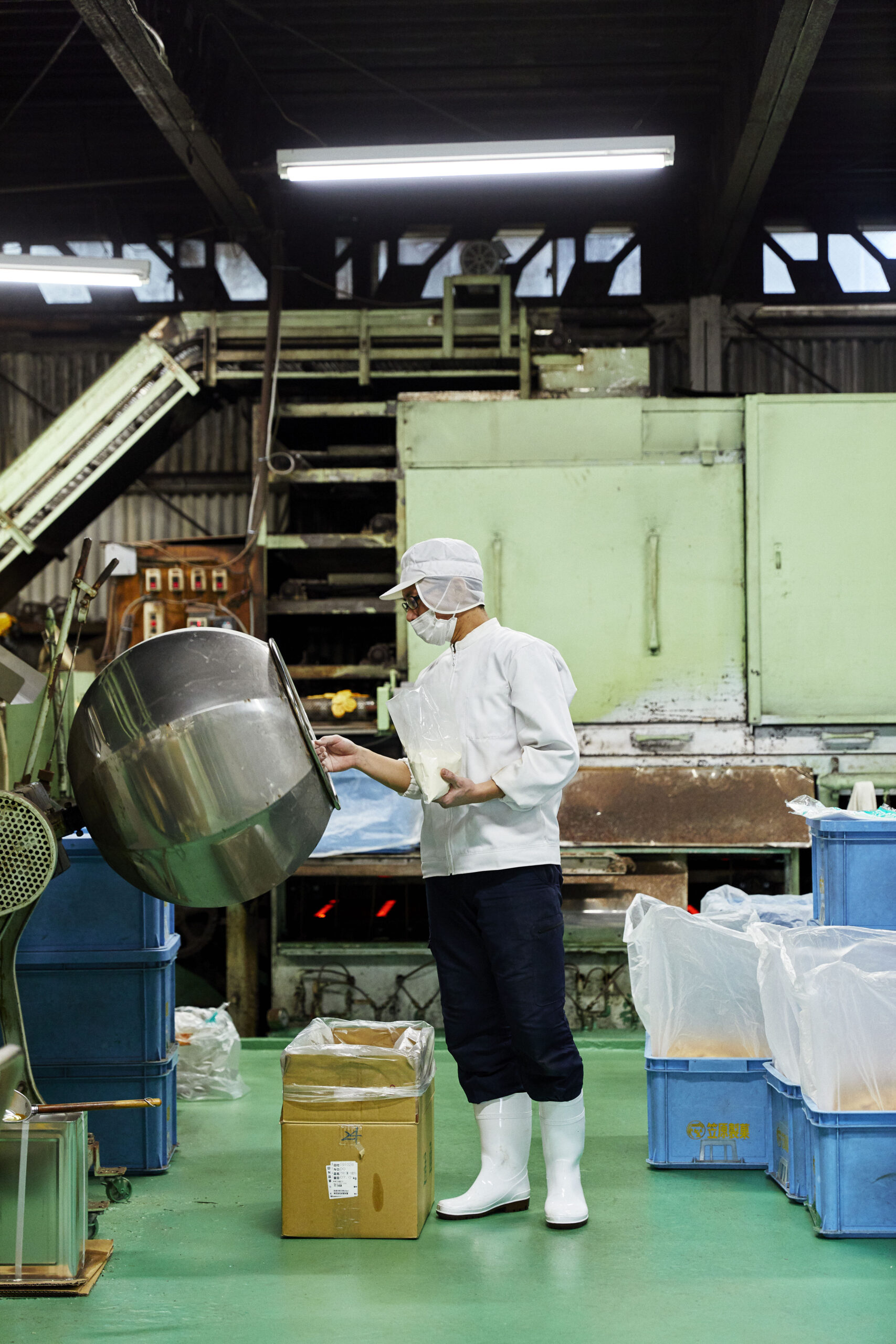
Kasahara Tadakiyo on the factory floor. “My brother can tell the perfect heat setting just by touching the dough, factoring in the day’s temperature and humidity,” Katsunori says proudly. Photo: nice things.
Once baked, the senbei are transferred to a custom-built flavoring machine. For their classic soy sauce flavor, the senbei are tumbled in a barrel of soy sauce, allowing even seasoning without breaking the delicate texture. Then, taking advantage of their two-story system, the pieces move to the upper-level dryer where the oven’s residual heat gently finishes the process. This unique flow is what gives Kasahara Seika’s senbei their distinct taste and texture.
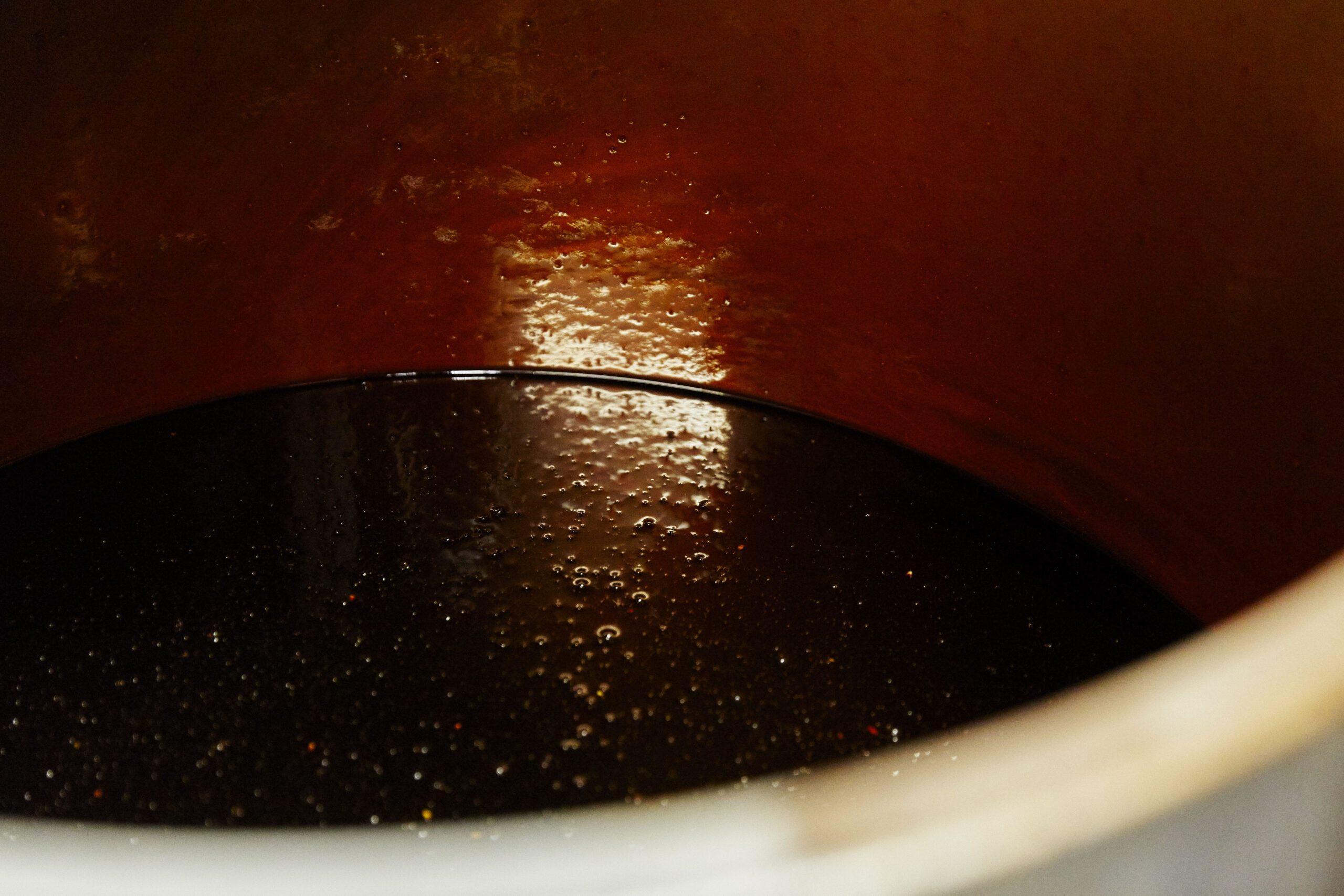
They’re also particular about ingredients: the soy sauce comes from a 300-year-old producer in Ibaraki, and the dough is made from high-quality kuzu-mai (broken rice), which retains its natural sweetness even when baked plain. Photo: nice things.
“Stylish” Senbei Born from Design and Craftsmanship
Today, Kasahara Seika is known for its hit brand Senbei Brothers, a sleek and delicious reinvention of senbei that’s captured the public’s imagination. But the path to this hit product wasn’t easy.
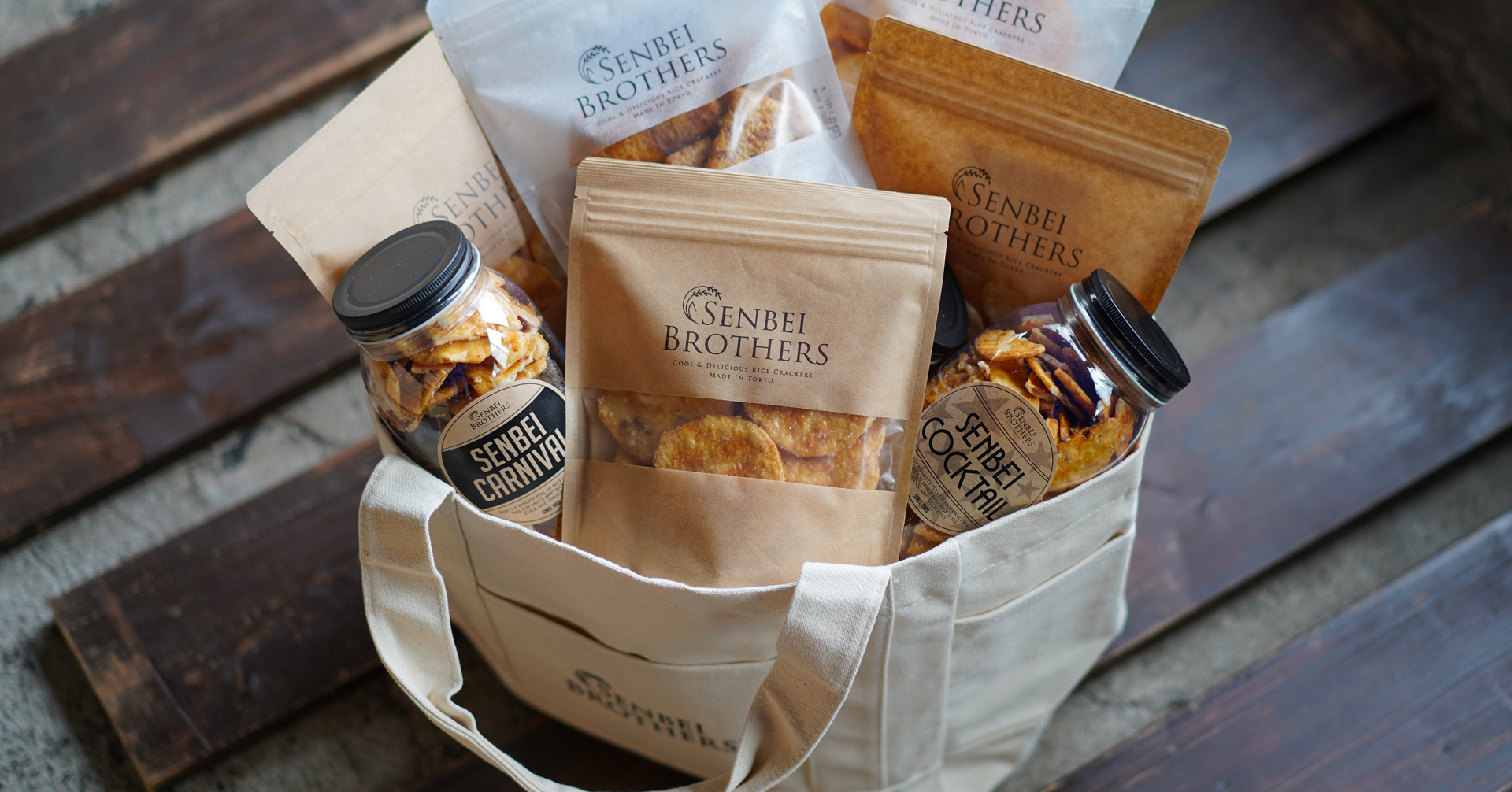
Launched in 2014, Senbei Brothers was Kasahara Seika’s first original brand. With its stylish rebranding of traditional senbei, it made waves in the snack world. Photo: nice things.
By 2014, the company was on the verge of bankruptcy, Katsunori recalls.
“After our father passed away about 30 years ago, it was our uncle who kept the factory running. My brother joined in 2004 as factory manager, but with declining demand for senbei, wholesale orders dropped off. Our workforce shrank, and Tadakiyo was essentially handling production on his own. Then in 2011, the Great East Japan Earthquake hit, and by 2014, our uncle fell seriously ill. It really looked like the end for the company.”
Katsunori had spent nearly two decades working in design, far from the world of senbei. But faced with this crisis, he decided to return to the family business.
“When our father passed, I always felt I should have done more. I couldn’t go through that kind of regret again. I didn’t know what I could contribute, but I was determined to try—if only for the sake of our family.”
And so, Senbei Brothers was born—a brand that blended the strengths of a designer and a craftsman. It was an attempt to move away from a wholesale model that was vulnerable to market shifts, and toward a direct-to-consumer business. The concept was inspired by Katsunori’s own experience working in an office in Omotesando.
“I always kept senbei in my bag for when I got hungry. But eating them while wearing a suit in Omotesando—it just felt embarrassing. I’d hide and sneak bites. That’s when I thought: what if senbei could be as cool and casual as grabbing a hot dog in New York? If we made senbei something stylish, it could really change its perceived value.”
From packaging to retail strategy to how senbei is eaten, Katsunori wanted to reframe it—not bound by tradition, but guided by the idea of revealing senbei’s full potential. Using his design background, he created a sophisticated logo and a sleek, modern package that gave senbei a fresh identity, far removed from conventional wagashi (traditional Japanese sweets). The concept: “Making senbei delicious—and cool.” The senbei was made by the younger brother, sold by the elder. That’s when the name Senbei Brothers clicked.
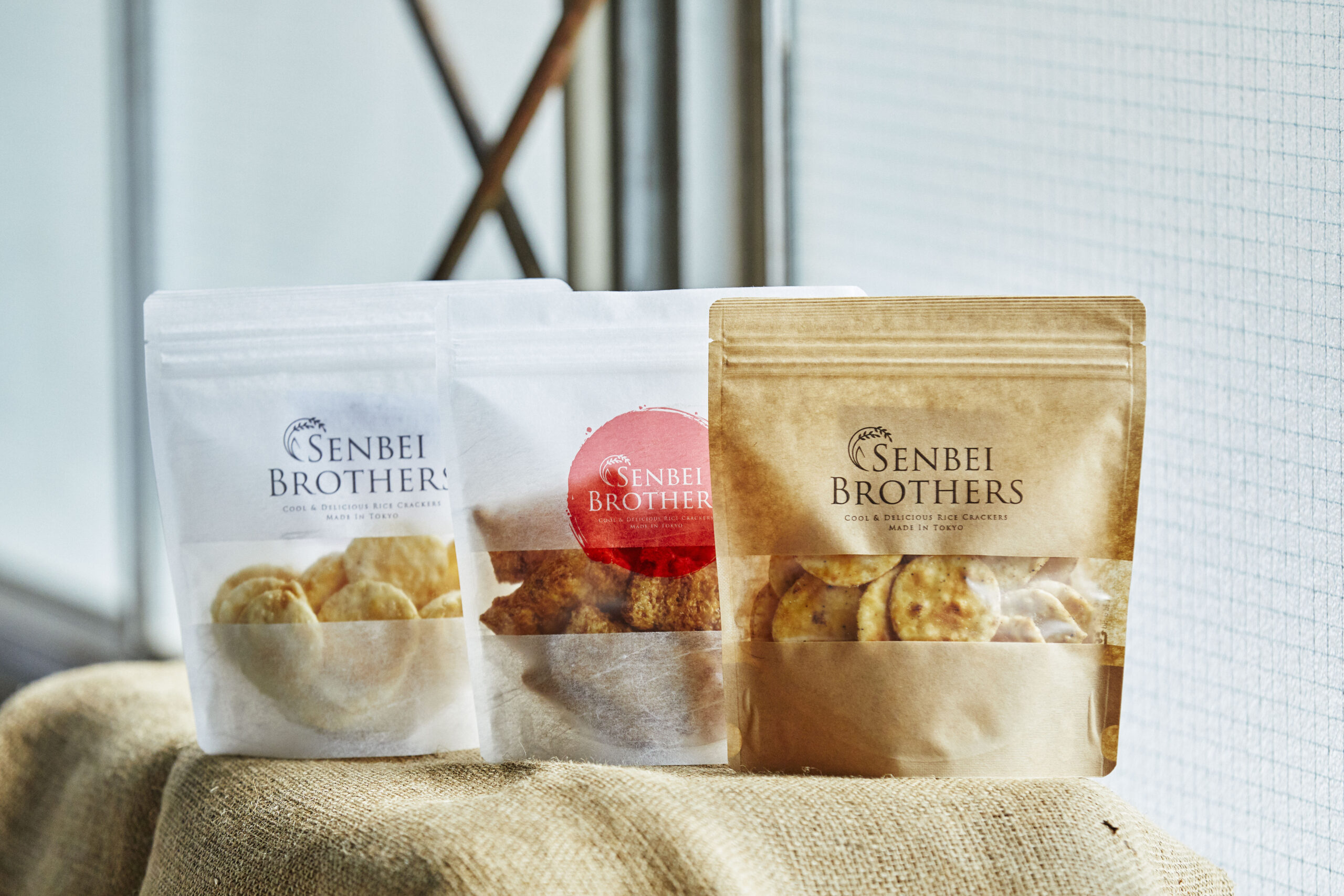
Inspired by coffee packaging, the windowed standing pouch gave senbei a modern, premium feel—updating its image from humble snack to a desirable, gift-worthy treat. Photo: nice things.
Ideas Unbound by Convention Give Rise to New Value
Now known for collaborations with major hotels and fashion brands, Senbei Brothers wasn’t always the success story it is today. From the start, the brothers set out with a clear goal: “Rather than ten people saying it’s good once, we want one person to come back and buy it ten times.” They aimed not for mass-market appeal, but for a flavor that would stay in people’s memory. Their distinct lineup of products comes from ideas free of industry norms, trend analysis, or market research.
Take for example one of their signature items, Kiwami Wasabi (“Ultimate Wasabi”). It was born from Katsunori’s insistence that “if we’re going to call it ‘ultimate,’ it has to be seriously spicy.” He and his brother tested batch after batch to create a wasabi flavor far beyond the usual gentle “hint of wasabi”—something with real punch.
“When we finally nailed it, my brother told me, ‘You know, I don’t even like wasabi.’ He’d been taste-testing the whole time with tears in his eyes. Thanks to that effort, it became one of our most-loved flavors.”
The brand’s fresh thinking extends to how it sells, too. In the senbei industry, cracked or broken pieces are usually sold cheaply as second-rate “B-grade” goods. But Senbei Brothers embraced the irregularity—selling by weight with about 10% broken senbei intentionally included. Their refusal to follow convention and willingness to find value in what others might discard has helped push the senbei world into new territory.
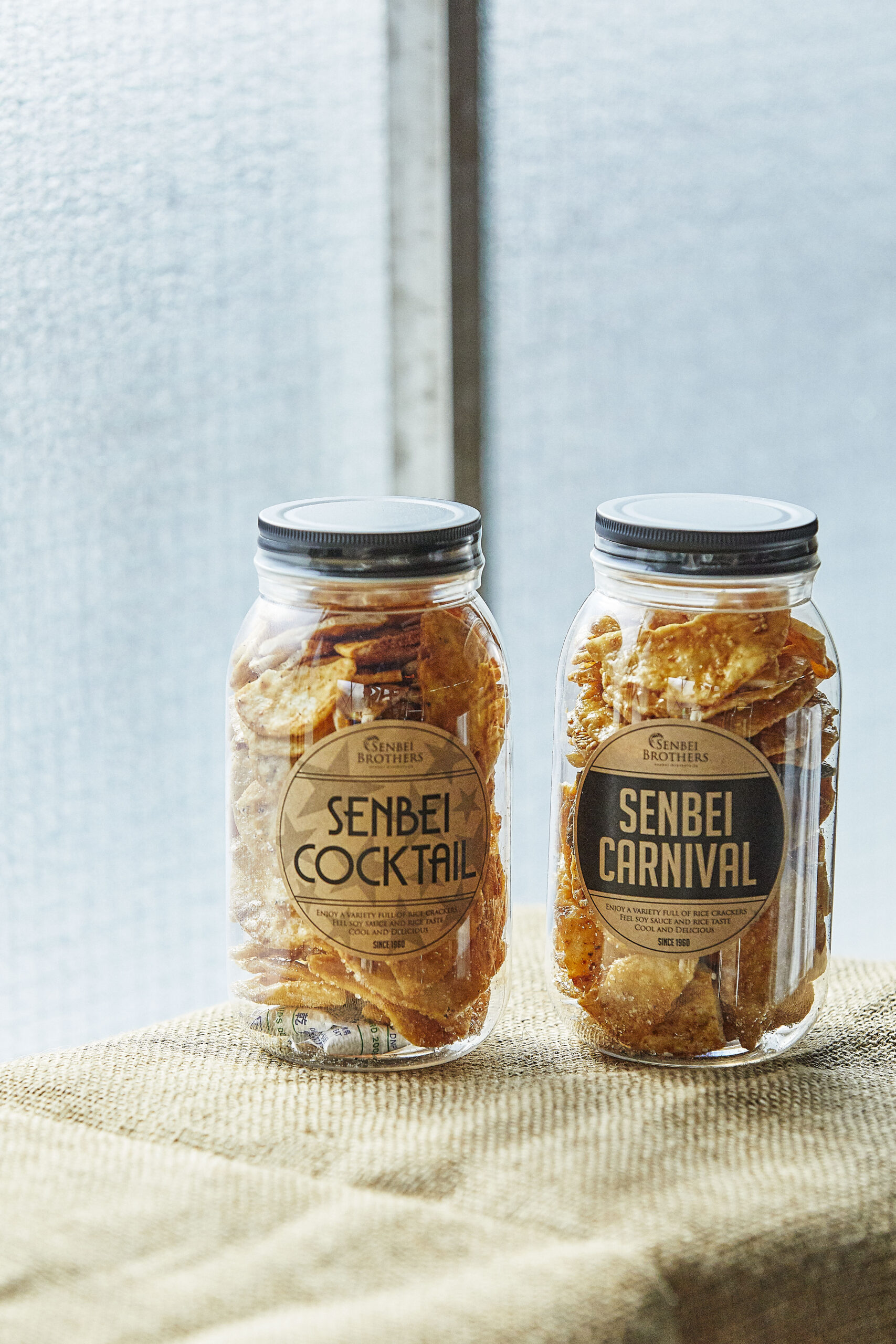
Senbei Carnival (right) is a bottle-packed assortment made only of broken pieces, combining salty, spicy, and sweet—like white sesame, sweet-spicy shichimi, and sugar glaze—for a new kind of snacking experience. Photo: nice things.
Brothers Hand in Hand, Ready to Keep Taking on New Challenges
Funabori, where the factory stands, is the brothers’ hometown. While it once had many small factories, the neighborhood has changed over time.
“Many of those factories have been replaced by apartments and single-family homes. It’s great that more people are moving in, but making senbei—with its soy sauce aromas and all—means we have to be especially considerate of our neighbors. It’s not easy. We can’t even open the windows, and in summer the temperature inside the factory can climb to nearly 50°C. Improving the working environment is a big challenge.”
But that same challenge became a spark for new ideas. One solution was the Rice Pop Cracker, a senbei made with a simplified roasting process. “We use a special method to process the rice, giving it a light, snack-like texture. It’s crisp and addictive—we’ve gotten great feedback,” says Katsunori.
Behind each of these innovations is the strength of their contrasting perspectives. Katsunori, who knew nothing about senbei but brought in design and marketing skills from the commercial world, and Tadakiyo, the craftsman, who knows how to translate new ideas into reality through experience and instinct. One dreams up the ideas, the other makes them possible. It’s this balance that fuels Senbei Brothers.
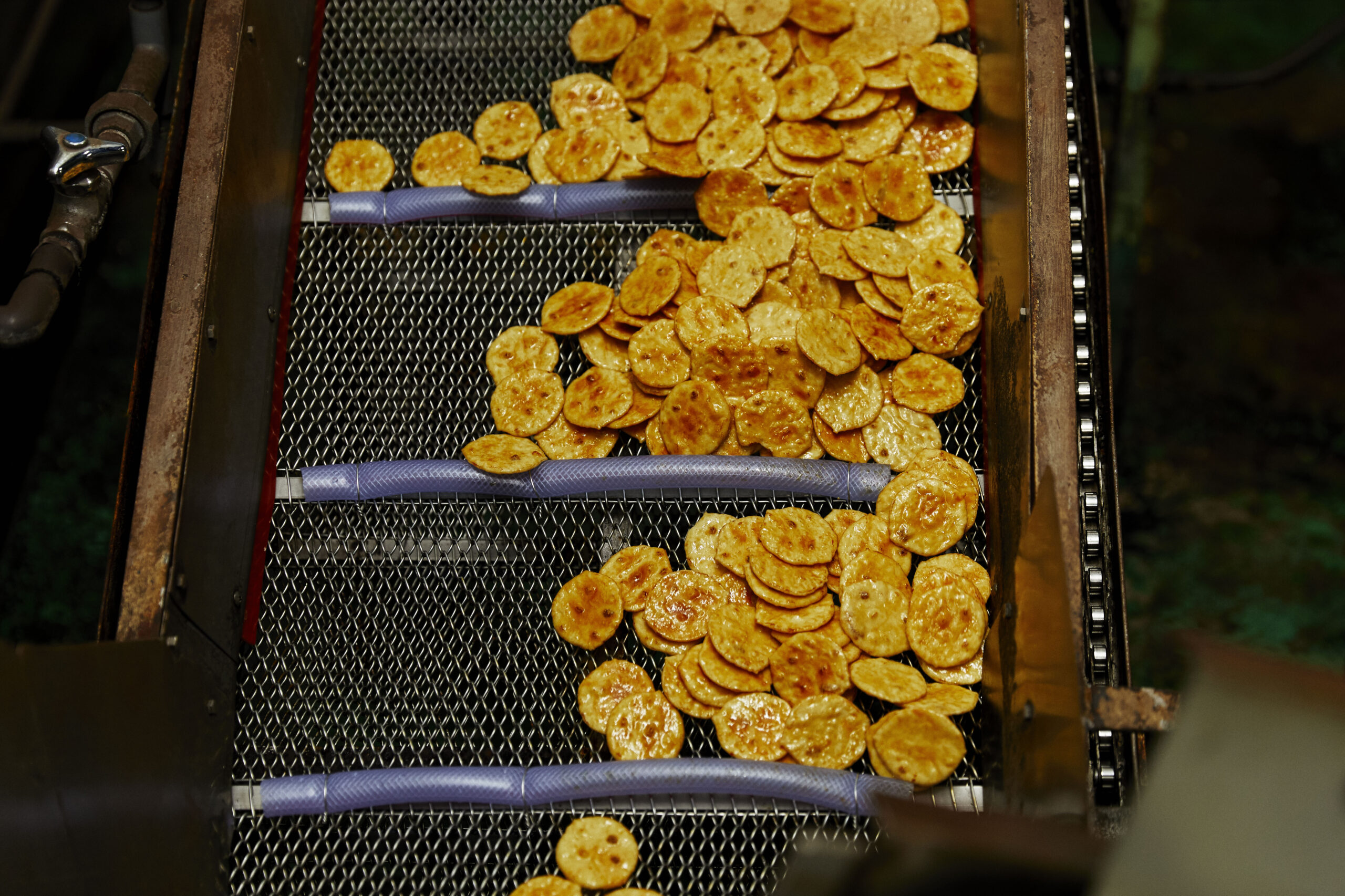
Photo: nice things.
When asked about his feelings toward Edogawa City, where he grew up, Katsunori smiles.
“Edogawa doesn’t have a famous tourist attraction that stands out. Sure, we’ve got Funabori Tower, which is considered one of Tokyo’s ‘three towers,’ but putting it alongside Tokyo Skytree and Tokyo Tower feels a little overambitious, right?” He says with a laugh. “But if you dig a little deeper, you find amazing people—like a fireworks master who’ll be judging judo at the Paris Olympics, or ramen shops with huge lines. These days, Olympic athletes and celebrities are starting to come from here too. It’s a neighborhood full of interesting, talented people. That’s what I love about it.”
Katsunori believes firmly that “every hardship brings a new opportunity.” Whether facing raw material shortages or extreme heat in the factory, the brothers have found ways to turn problems into creative fuel. In this rapidly changing world, Kasahara Seika will keep pursuing the kind of value that only they can offer.
Writing: Kiuchi Aki
Introduction of the Artisan
Kasahara Seika traces its roots to 1945, when it was founded in Tokyo’s Shinjuku City as Kasahara Senbei-ya. Following a city redevelopment project tied to the 1964 Tokyo Olympics, the factory relocated to Katsushika City in 1959, and officially began operations under the name Kasahara Seika in 1960. In 1970, the company moved again to Funabori, Edogawa City, where it remains today. Fourth-generation president Kasahara Takenori and his younger brother, factory manager Tadayoshi, continue to operate the original machinery while also developing bold new flavors. In 2014, they launched their own brand, Senbei Brothers, with the concept: “Make senbei tasty and cool.” The lineup spans from traditional tamari soy sauce to inventive options like truffle potato, offering something for every palate.
・Kasahara Seika (Senbei Brothers)
・7-6-16 Funabori, Edogawa City, Tokyo

